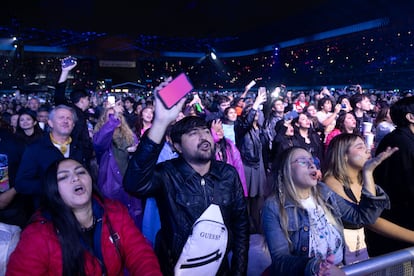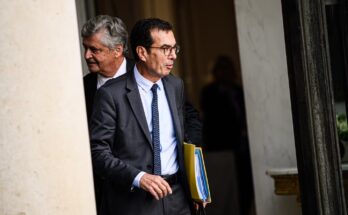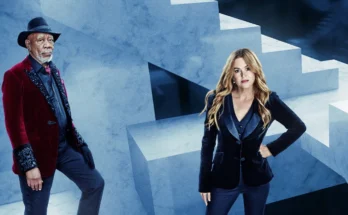About 20 meters from the stage of the GNP stadium in Mexico City, sits a tall, thin young man, in his twenties, looking around with his airpods positions. There are almost two hours left until the start of Zoé’s concert, in the last appointment of six. A few minutes later, a young woman about his age sits to his right. They are separated by the profile of the chairs. Both go alone. In front of them sit five adults, men and women over 40, who speak as if they were at a meeting between personalities of art, cinema and culture. The night cools down and, four rows behind, a family bundled up in jackets, sweaters and hats takes their seats: mother, father and son, a boy of 8 or 9 years old. In front of everyone, in the corridor that divides the first from the second seating area, walks an intellectual-looking man with gray hair and glasses, accompanied by his now adult daughters. This is the flesh-and-blood audience of the only rock band, of any nationality, to fill Mexico’s stellar concert venue six times in a month and a half.
The same band that is about to go on stage is trying to understand how this generational shift occurred, after 10 years ago they had to adapt the same stadium, then called Foro Sol, to accommodate 40,000 spectators in one night. “The first thing that can be deduced is that they are the children of those who already follow the band. The number of followers is starting to double because, having had a career of more than twenty years, the generation that grew up with us is already starting to have a subsequent one, and I think the most important is the one between 15 and 25 years old,” explains Rodrigo Guardiola (Mexico City, 47 years old), Zoé’s drummer, in an interview, days before the group’s last two concerts, on November 12th and 13. “There are children who, from the age of 7, are interested in going to a first concert, who are already approaching music or who at home, through their parents or friends, listen to a bit of Zoé. What does this mean? That we are quite lucky and that our music has permeated and connected people of many ages, with many musical tastes. I don’t think that all those who follow us now are exclusively rockers. I think it is a generation that listens to all types of genres”, he explains.
When Zoé goes on stage, around 9.40pm, the stage and the stadium stands are full. Cell phone lights flash overhead. There are therefore 390,000 participants in total at the six dates, 65,000 each, the first four taking place between the end of September and the beginning of October. A monumental screen that crosses the sides and behind the stage lights up with neon pink images. In the center appears the black figure of memory, the central character of the album ‘Memo Rex Commander and the Atomic Heart of the Milky Way’ (2006), a kind of monster with a short torso and elongated limbs, which became a symbol of the band. There are T-shirts, stuffed animals and other items of this figure. The audiovisual impact of the moment is powerful. You can hear the characteristic rhythmic ride of the song’s introduction Memorandum Rex. This confirms that a band that emerged in the late nineties has made an appropriate leap into the era of social networks, which at some point had exponential growth and now makes a commitment to offer a total experience in its concerts.
Rodrigo Guardiola says he discovered the group’s new popularity when they agreed to perform at the Vive Latino festival in March this year. “We began to feel a very strong impulse on social media, on TikTok, on Instagram, from the stories and videos that were published by very young people, very excited at the idea of seeing Zoé for the first time. And then we understood that there was something different. At the festival you feel a very different show, very exciting. It seems that Zoé had stopped for 10 years, but the break was short, two and a half years.” When, thanks to the success achieved at Vive Latino, the director of Ocesa, Alejandro Soberón, proposed to them to build a GNP stadium, they were surprised by the response of the public, who in a few minutes sold out the first appointment during the presale phase.
The band plays from start to finish Commander Memo Rex and the atomic heart of the Milky Way. In songs like ‘Vía Láctea’, ‘Don’t Destroy Me’ or ‘Paula’, the audience’s singing is deafening. León Larregui, the singer, dressed in dark trousers, suspenders, a T-shirt with the image of María Sabina in black and white and a light beige straw hat, punctuates his performance with comments that provoke laughter from the audience. When they have played five songs he says: “With the next song we say goodbye”, and then he himself says: “Bad joke”. Later, two moments mark the night: when ‘Arrullo de estrellas’ plays, Zoé’s anthem that Larregui dedicated to her mother after the news that she was suffering from cancer, with the effect of a starry sky projected on the big screen and the lights of the audience’s phones, and the performance of ‘Luna’ with the participation of Denise Gutiérrez, singer of Hello Seahorse. The memorable moment comes when Denise and León hug and she sheds tears that force her to stop. His final song is one of lament and relief.

Each melody involves work on sound and audiovisual design that required several months of work. The rehearsals before the first concert consisted of three phases: in the first, one or two songs a day were reviewed and the set list of songs and the technical aspects of the sound were prepared; In the second, the complete show was performed once in the morning and once in the afternoon, and in the third, the entire team was integrated to make adjustments to the instrument, time the timing, and view the images and lighting. Rodrigo Guardiola’s preparation was based on daily walks and yoga, practicing every day with his instrument, the drums, and acquiring through rehearsals the physical condition to continue playing for two hours and 20 minutes. “For a drummer it’s like a football match. If you start the first song very strong, you will exhaust yourself and lose the impact you started with. You have to start in a more measured way, work your way up and as you warm up in the show you let go and dose the force,” explains the musician.
Zoé doesn’t have the idea of releasing an album in her immediate plans. For now they wanted to respond to the public’s enthusiasm with six concerts. “Everything in this moment revolves around that feeling that we discovered in these new people who wanted to see Zoé,” Guardiola says. They also have no plans to do a real tour, due to the absence of new material. They instead plan to do three concerts in the United States and two more in South America between January and June 2026, which are to be confirmed. The next dates already confirmed are: their presentation at the Tecate Comuna festival on November 22nd, in San Andrés Cholula, Puebla, and they will be one of the main groups on the third day of the Tecate Pa’l Norte festival, in Monterrey, in March next year. The band will soon try to find a space to plan a next album that would justify an international tour. For now, León and Sergio Acosta, the guitarist, live in Europe, while Ángel Mosqueda (bass and backing vocals), Jesús Báez (keyboard and backing vocals) and Rodrigo Guardiola reside in Mexico.
After Denise Gutiérrez leaves the stage, León Larregui says, “That’s how things are. It’s become good, right?”, and laughter from the audience rings out in response. Later, after the interpretation red lips, The singer is honest: “I’m trying to be present and record it in my memory, because it will probably never happen again. I’ll record it for my whole life.” At the end of the concert, at midnight, the solitary people, intellectuals and families go home.




